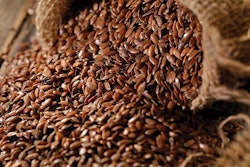
When corn gets expensive, interest grows in alternatives
The majority of broilers are fed diets based on corn as the main source of energy. This is especially the case for broilers raised in the U.S. and other regions that either grow or import corn for their livestock and poultry feeds.
Alternative cereals always see renewed interest when corn prices spike – as is the case currently, with no easy prediction for lower prices in the foreseeable future. Thus, when alternative cereals are considered, new problems are likely to appear unless one has carefully planned ahead to avoid them. Below is a list of alternative cereals for broilers, along with the potential problems, and some solutions. These are offered for discussion with your nutritionist and not as the absolute recommendation because cereal quality affects the performance of each batch distinctively.
- Wheat. A good number of broilers are already fed on wheat (soft), as is the case in many countries in Europe. Wheat contains more protein but less energy than corn. It is rich in non-starch polysaccharides (NSP) that may increase gut viscosity. This leads to reduced nutrient digestibility and sticky-wet droppings. The problem is addressed by using a wheat-specific enzyme such as wheat-xylanase, but the response depends on wheat quality and level of NSP.
- Barley. Barley can never be the only cereal fed to broilers (unlike wheat) because it contains too much fiber (reduced energy). But, when used, it needs to be supplemented with oil to account for less energy, and with a barley-specific enzyme such as beta-glucanase because it is also rich in NSP, but the profile is different from wheat.
- Rye. This cereal abounds in northern countries as it can withstand cold weather during its growing season. Rye is even richer in NSP and must be used with caution, or wet-sticky droppings will become a serious problem. There is not enough research regarding enzyme use when it comes to feeds rich in rye, but a blend of enzymes as described for wheat and barley should suffice. Rye is also prone to infestation by ergot, a fungus that produces a mycotoxin that currently has no antidote. Lightly infected batches should not be used at all for young broilers and mixed down with clean batches for older birds.
- Triticale. This is a hybrid of wheat and rye and the problems and recommendations for the two parent cereals also hold true for this cereal. Triticale is more resistant to ergot.
- Sorghum. Modern varieties should contain little of the antinutritional factors older varieties were known for, such as tannins. Tannins reduce feed palatability and nutrient digestibility. The concentration of tannins in yellow seed varieties ranges from 0.2% to 0.5%, whereas that of most brown-seed varieties range from 0.5% to more than 3%. Although seed color is a good initial indicator of tannin concentration, the concentration of tannins in many modern brown-seed varieties may be as low as that in yellow-seed varieties. There is no additive to bind tannins in sorghum.
- Rice. The only problem with rice, especially white broken rice, is that it is expensive. Otherwise, it can be used without any concern. Brown rice contains more fiber, and this should be accounted for during formulation.
This is a brief list of issues with alternative cereals, and the focus is on the main problem. Other minor issues exist, and these should be discussed with your nutritionist.

















